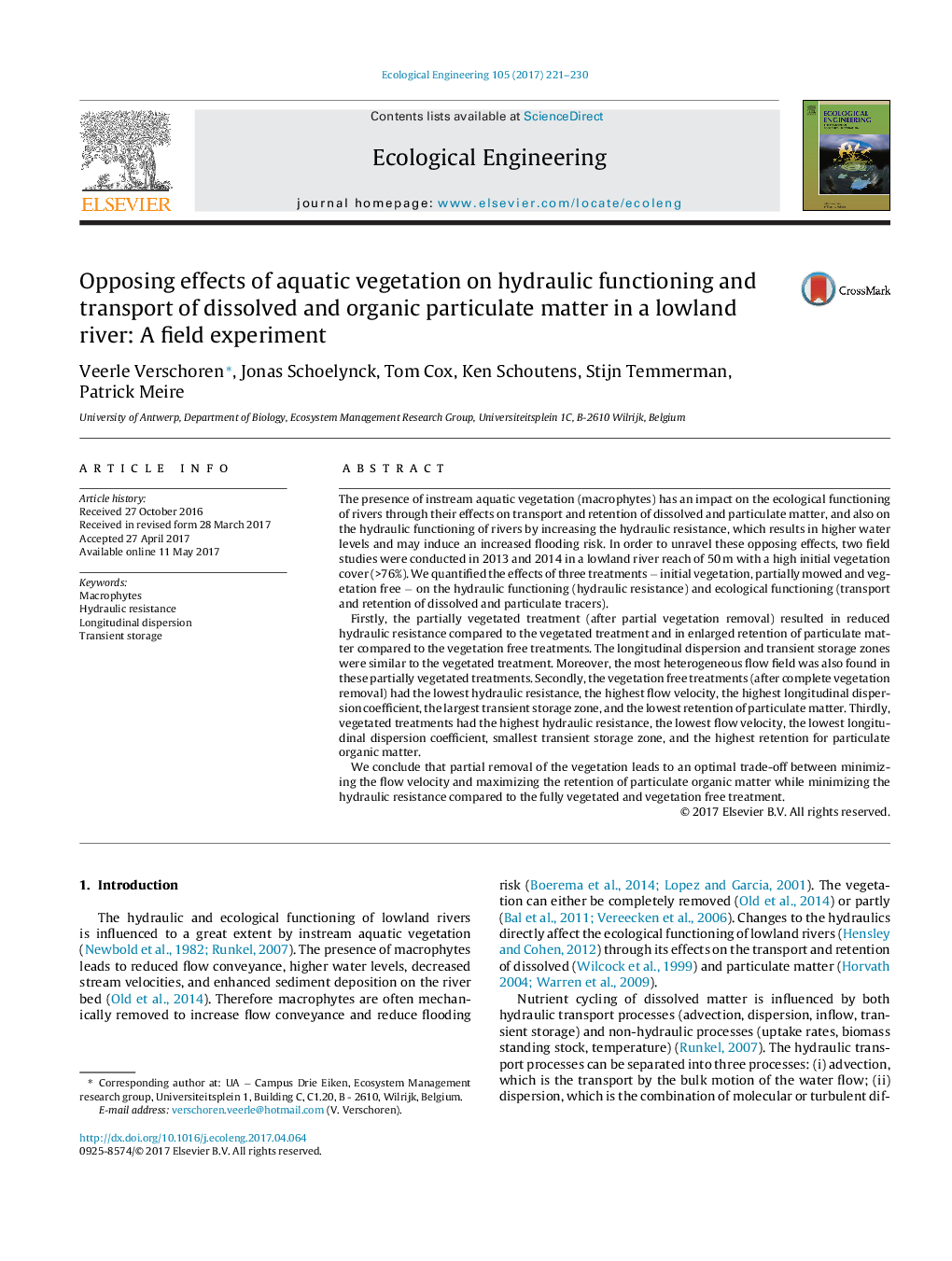| کد مقاله | کد نشریه | سال انتشار | مقاله انگلیسی | نسخه تمام متن |
|---|---|---|---|---|
| 5743616 | 1617996 | 2017 | 10 صفحه PDF | دانلود رایگان |
- Tracer experiments matter are performed with dissolved and particulate.
- The effect of vegetation covers investigated in situ at river reach scale.
- Plants reduce the longitudinal dispersion coefficient and transient storage zone.
- The most heterogeneous flow field is found when part of the vegetation is removed.
The presence of instream aquatic vegetation (macrophytes) has an impact on the ecological functioning of rivers through their effects on transport and retention of dissolved and particulate matter, and also on the hydraulic functioning of rivers by increasing the hydraulic resistance, which results in higher water levels and may induce an increased flooding risk. In order to unravel these opposing effects, two field studies were conducted in 2013 and 2014 in a lowland river reach of 50Â m with a high initial vegetation cover (>76%). We quantified the effects of three treatments â initial vegetation, partially mowed and vegetation free â on the hydraulic functioning (hydraulic resistance) and ecological functioning (transport and retention of dissolved and particulate tracers).Firstly, the partially vegetated treatment (after partial vegetation removal) resulted in reduced hydraulic resistance compared to the vegetated treatment and in enlarged retention of particulate matter compared to the vegetation free treatments. The longitudinal dispersion and transient storage zones were similar to the vegetated treatment. Moreover, the most heterogeneous flow field was also found in these partially vegetated treatments. Secondly, the vegetation free treatments (after complete vegetation removal) had the lowest hydraulic resistance, the highest flow velocity, the highest longitudinal dispersion coefficient, the largest transient storage zone, and the lowest retention of particulate matter. Thirdly, vegetated treatments had the highest hydraulic resistance, the lowest flow velocity, the lowest longitudinal dispersion coefficient, smallest transient storage zone, and the highest retention for particulate organic matter.We conclude that partial removal of the vegetation leads to an optimal trade-off between minimizing the flow velocity and maximizing the retention of particulate organic matter while minimizing the hydraulic resistance compared to the fully vegetated and vegetation free treatment.
Journal: Ecological Engineering - Volume 105, August 2017, Pages 221-230
